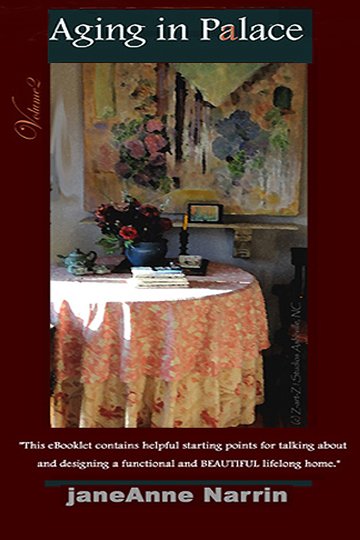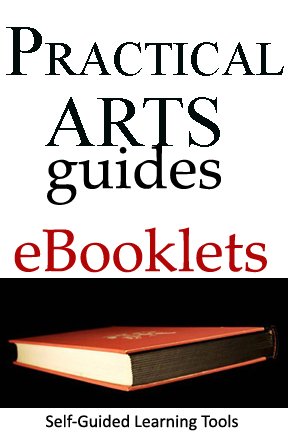BOB STOCKTON
"Heard the One about the Frog?"
COPD does not have to be a death sentence. It can be controlled. Ignore this
disease and the story will be different.
Bob Stockton
Heard how if a frog is put into a pot of water
and the pot is brought to a boil, the frog wont react and his goose will
literally be cooked?
Until recently I was like that frog.
I started smoking during a stay in a hospital, back when professional athletes
were featured in cigarette commercials. Smoking on camera was common. At the
end of some TV shows, a tobacco company spokesman would read a list of VA
Hospitals that would be receiving free cigarettes. I don’t recall smoking being
prohibited anywhere. No one worried about second hand smoke.
Times changed, I didn’t. I kept smoking, thinking someday I should quit.
As I neared fifty I would sometimes get short of breath doing something
strenuous and I was having sinus problems. My nose was never completely clear.
It bothered me enough that I went for a physical. I checked out fine, no
problems. For my shortness of breath and sinus blockage I was proscribed an
allergy medication. It helped. I did breathe better. I would still get SOB, but
I was getting older.
Bob Stockton
Faithfully, I had a physical every year, always with the same result. I was in
great shape, I was told. That wasn’t a fluke. I watched what I ate and drank. I
got enough sleep and worked out on my ski machine.
That clean bill of health made it easy to ignore getting short of breath
quicker.
Then last year, after being off my exercise program for awhile, I got on my ski
machine. Even going slowly, I had trouble breathing. I thought something must
be wrong.
By chance I noticed a TV commercial. “Having trouble breathing? It might be
COPD,” it said. It was a pleasant ad. COPD didn’t sound bad, until I looked it
up on the Internet.
Chronic Obstructive Pulmonary Disease is a group of diseases affecting the
lungs. COPD is our number four killer and the second leading cause of
invalidism. Fourteen million Americans have been diagnosed and it is estimated
that another fourteen million probably have it. That’s a very high number with
a serious condition many never heard of.
Bob Stockton
I had never heard of it. Sometimes ignorance is not bliss.
After studying the symptoms honestly, COPD seemed likely. It was time for
another annual checkup, Again no problems, but this time I insisted on further
testing.
I had a Pulmonary Function Test at the local hospital. It was a series of
breathing exercises done with a high-tech machine.
When the results came the only surprise was one of degree. I had COPD, with
both a chronic bronchitis and an emphysema component. My lung function was
rated at 32% of normal.
The common rating scale rates a lung function less than 40% as severe, some
references called it “end stage.” I saw statistics saying the five-year
survival rate for severe cases is about 60%. I also saw a video where a doctor
says patients with emphysema would “end up wishing for a quick death with lung
cancer rather than face the slow, painful suffocation of emphysema.”
Needless to say, it wasn’t my best day.
Oddly, I also felt relieved. It wasn’t cancer. Despite what the video doctor
said, I wanted no part of “a quick death.”
I didn’t know how long I’d been “severe,” but, in retrospect, I’d probably had
the disease for years already.
Bob Stockton
While there is no cure for COPD and it is a progressive, it can be fought.
Realizing how much I had to live for, having a “severe” case didn’t matter, I
was ready for a fight.
My family doctor proscribed medication and said unless I had a problem he’d see
me at my next physical. I wasn’t prepared for that talk. The few questions I
asked were answered evasively. Maybe because he is a generalist, he either
didn’t know or wasn’t comfortable with the answers.
The medicine helped. After several days I realized I could go up a flight of
stairs without discomfort. Soon I noticed other benefits too. The drug is not
actually improving my condition, nothing can. It simply relaxes constrictions
in my lungs allowing breathing to be more productive. Still I’m thankful.
About smoking, I knew someday had come, but could I break my forty-year
addiction? The chance to postpone a “slow, painful suffocation” proved a great
motivator. Within a week I was off the weed.
I continued searching the net, to learn about COPD. I found a number of forums
devoted to these diseases. Behind the anonymity of cyberspace, members write
openly about their experiences and how they cope, or not, with having a deadly
disease.
It seems I wasn’t the only frog in a pot. Many people first learned about COPD
in an Emergency Room, unable to breathe. Statistics show that about one in six
smokers will develop COPD. That makes me wonder why there isn’t more active
screening? If I hadn’t had a moment of clarity, realizing something was wrong,
I would still be congratulating myself for passing my physical. I would still
be smoking, ignoring my downhill slide, with the water in my pot moving to a
boil.
Although smoking is the most common cause there is a genetic form of this
disease and irritants in the air can also bring it on. Regardless of the cause,
COPD is just as relentless and just as deadly.
Bob Stockton
There are a number of drugs that may help. Most people take two, three, or more
medications. A high percentage are on oxygen, many 24/7.
The way this disease affects quality of life seems unpredictable. Some with
“moderate” COPD are confined to home, on oxygen, and become out of breath
walking across a room. They are plagued with repeated trips to the ER and
reoccurring pneumonia. In contrast, a few with very low lung function are able
to continue working and live reasonably normal lives.
The presence of other health problems magnifies the impact of COPD, but I
believe state of mind plays an equally important role. Get caught up in a “why
me” syndrome, or simply decide everyday activities are no longer possible, and
you’ll be on your way to becoming a self-made invalid.
So far I’m very lucky. While my numbers say “severe,” I’m able to do everything
I want, or need, to do. With some things, I do need to go slowly and do less. I
don’t feel limited, actually I feel blessed. Most friends aren’t aware I’m
carrying a killer in my chest.
Bob Stockton
So my problem now is how to stay this way for as long as possible?
The message boards say that many family doctors’ method of treating COPD is to
write a proscription and hope for the best.
Playing that game I’d be jumping back into the pot.
On the net, I found the nearest hospital known for treatment of pulmonary
diseases. The hospital’s web pages identified doctors specializing in COPD. I
called and managed to get an appointment.
That first session was primarily a discussion of my previous lung test and
medical history. I explained that, all things considered, I was feeling good
and doing good, and I wanted to stay that way. The doctor said I came to the
right place.
A second session was scheduled, to include another Pulmonary Function Test.
That will be followed by what is called a “hallway walk.” The objective is to
walk as far as possible in six minutes, while blood oxygen level is monitored.
Later I’ll meet again with my new doctor. It sounds like a full day; I’m
looking forward to it.
The doctor also proscribed a second drug. After taking this additional
medication for a few days I found, as the doctor predicted, I could do a little
more of everything I tried. Maybe I did go to the right place.
COPD does not have to be a death sentence. It can be controlled. Ignore this
disease and the story will be different.
I’m very optimistic for myself, but I can’t help remembering those fourteen
million Americans who have COPD and don’t know.
If you are, or were, a smoker or you get short of breath, take some action,
don’t expect someone else to get you out of the pot.
Don’t be a frog.
##
THANK YOU FOR SHARING ON BEING SAGE
follow on Twitter | friend on Facebook |follow on Pinterest |forward to a friend
Collect Sage Companion Practical Arts eBooklets on Kindle
SITE SEARCH
HOME ABOUT US DISCLOSURE SPONSORS DONATE SITEMAP
Disclaimer: The nutritional and health information provided on this site is for informational and educational purposes only. It is not intended to be used as a substitute for professional advice of any kind. This information is not intended to diagnose, treat, prevent or cure any illness. Your use of this website indicates your understanding and agreement with these terms.
R E T U R N T O T H E F R O N T P A G E
aging-in-place, age in place











